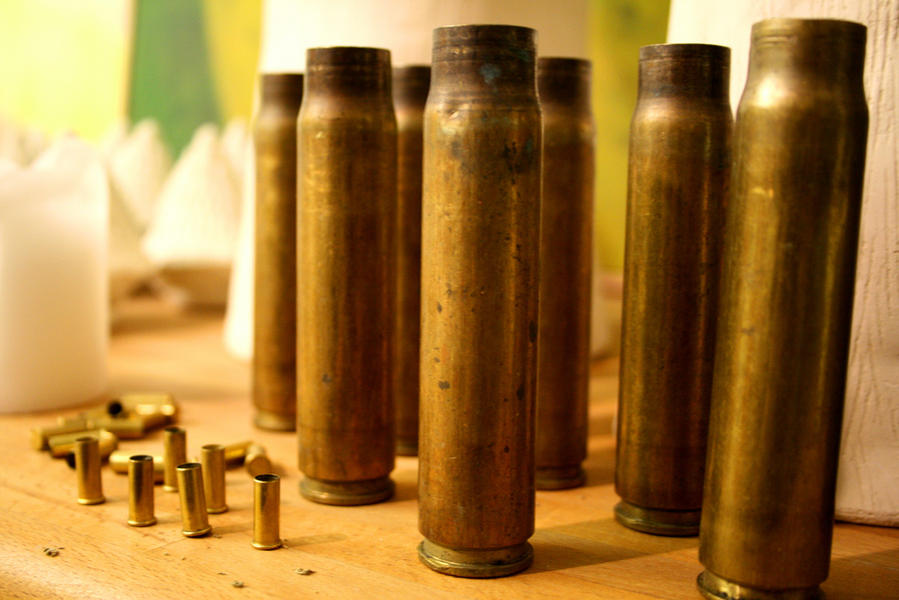The U.S. has been inadvertently arming ISIS, report confirms


Add this to the dictum about choosing your friends wisely: Be careful which allies you arm in your fight against a mutual enemy. A new European Union–financed study of the weapons Islamic State of Iraq and Syria (ISIS) militants are using in battle has found that more than 80 percent of the ammunition originated in the U.S., China, and Russia. The organization conducting the study, Conflict Armament Research, examined 1,730 recovered cartridges made as far back as 1945.
The information is collected on the website iTrace, which requires registration. The New York Times dug into the data, however, and has some numbers. The ammunition came from 21 countries, but about 19 percent originated in the U.S. — very likely captured from Iraqi security forces — but another 8.5 percent could have been sent into the region by the U.S. as well. Another 26 percent came from China, a large supplier of military armaments worldwide, and an equally large number of cartridges were made in the Soviet Union in the 1970s and 1980s, probably taken from Syria's Russian-supplied army.
Syrian officers have probably sold some small number of armaments to ISIS, rebel commander Fouad al-Ghuraibi tells The New York Times. But ISIS also picks its battles carefully, and with an eye toward capturing weaponry. "When battling against the Syrian Army, ISIS chooses to fight in a specific battle on a specific front only when the investment is appealing," he said: "There will be warehouses to capture."
The Week
Escape your echo chamber. Get the facts behind the news, plus analysis from multiple perspectives.

Sign up for The Week's Free Newsletters
From our morning news briefing to a weekly Good News Newsletter, get the best of The Week delivered directly to your inbox.
From our morning news briefing to a weekly Good News Newsletter, get the best of The Week delivered directly to your inbox.
A free daily email with the biggest news stories of the day – and the best features from TheWeek.com
Peter has worked as a news and culture writer and editor at The Week since the site's launch in 2008. He covers politics, world affairs, religion and cultural currents. His journalism career began as a copy editor at a financial newswire and has included editorial positions at The New York Times Magazine, Facts on File, and Oregon State University.
-
 The Week’s big New Year’s Day quiz 2026
The Week’s big New Year’s Day quiz 2026Quiz of the Year How much do you remember about 2025’s headlines? Put yourself to the test with our bumper quiz of the year
-
 Is tanking ruining sports?
Is tanking ruining sports?Today's Big Question The NBA and the NFL want teams to compete to win. What happens if they decide not to?
-
 ‘Netflix needs to not just swallow HBO but also emulate it’
‘Netflix needs to not just swallow HBO but also emulate it’instant opinion Opinion, comment and editorials of the day
-
 British warship repels 'largest Houthi attack to date' in the Red Sea
British warship repels 'largest Houthi attack to date' in the Red SeaSpeed read Western allies warn of military response to Iranian-backed Yemeni rebels if attacks on ships continue
-
 Houthi rebels claim Red Sea ship attacks
Houthi rebels claim Red Sea ship attacksspeed read Iran-backed Yemeni group vows to escalate aggression towards Israel-linked vessels in revenge for Gaza war
-
 Israel plans next phase of Gaza war as first hostages released
Israel plans next phase of Gaza war as first hostages releasedSpeed read After four-day ceasefire 'we will not stop' until destruction of Hamas, says Israel
-
 Mob storms Russian airport 'looking for Jews'
Mob storms Russian airport 'looking for Jews'Speed Read Plane from Israel surrounded by rioters chanting antisemitic slogans after landing in Russia's Dagestan region
-
 Tuberville's military promotions block is upending lives, combat readiness, 3 military branch chiefs say
Tuberville's military promotions block is upending lives, combat readiness, 3 military branch chiefs saySpeed Read
-
 Ukraine's counteroffensive is making incremental gains. Does it matter in the broader war?
Ukraine's counteroffensive is making incremental gains. Does it matter in the broader war?Speed Read
-
 US commissions first-ever Navy ship in a foreign port
US commissions first-ever Navy ship in a foreign portSpeed Read
-
 British spy chief, Wagner video suggest Prigozhin is alive and freely 'floating around'
British spy chief, Wagner video suggest Prigozhin is alive and freely 'floating around'Speed Read
